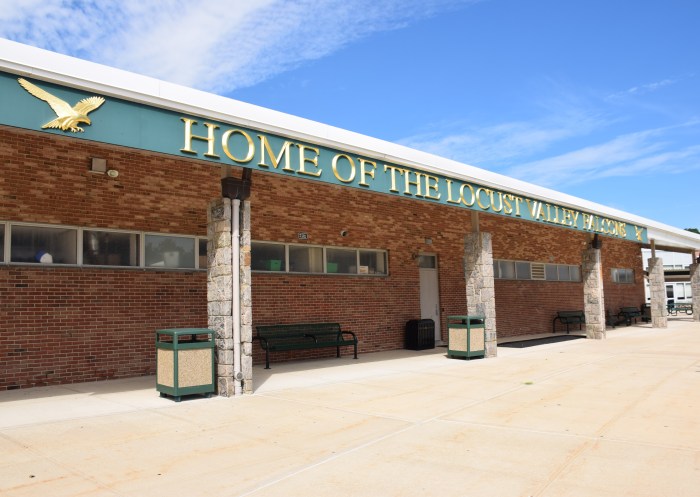In an effort to inform the community about the budget-building process and the educational issues that affect Garden City Public Schools, the district begins its “Question of the Week” series with three FAQs posed by our parents and residents. As the district begins the budget process – the first meeting is February 10, 8:15 p.m. at the high school – if you have a question about the budget, or any educational issue you’d like answered, please email your question to Dr. Catherine Knight: knightc@optonline.net.
Q: What are the implications of the governor’s 2015-’16 Budget for Garden City Public Schools?
A: “Impossible to tell,” explained Superintendent of Schools Dr. Robert Feirsen. “The governor has pushed for state legislators to approve his 2015-’16 proposed budget by the April 1 deadline. This is problematic for all New York State public school districts, including Garden City Public Schools, because districts must submit their tax levy limits to the state comptroller by March 1.
”Not knowing what the state aid numbers are when school districts are building their budgets puts them in a difficult position. The tax levy limit (see below) is the percentage that districts are, by law, allowed to increase the district’s total tax levy.
In his State-of-the-State/Budget presentation on Jan, 21, the governor explained that the state aid “runs” (the breakout of each district’s state aid for the following year) may not be available until just prior to the April 1 deadline.
Garden City School District relies primarily only two sources of revenue—property taxes (limited by the 2011 “tax cap” law) and the state aid (about 5 percent of the district’s budget) written into the governor’s budget. “Without knowing what the governor’s budget allocates for Garden City, we are forced to use the prior year’s allocation as our best estimate, and we cannot be confident of our accuracy,” explained Assistant Superintendent for Business & Finance Dana DiCapua.
In his “2015 Opportunity Agenda” presentation, the governor also proposed that state aid increases be withheld from school districts if districts do not agree to make student assessments 50 percent of teacher evaluations with the other 50 percent being based on “independent classroom observations.” This would change how teacher evaluations, known as APPR (Annual Professional Performance Review), will be calculated in all New York State public school districts. The 50 percent/50 percent revision is one of many educational changes proposed by the governor. Additional changes include raising the cap on charter schools, offering financial incentives to teachers, increasing the requirements of teacher tenure to those who are rated “effective” for five years, and offering lotteries for school choice to students in failing schools.
To view the complete list of the governor’s education proposals, please visit: https://www.governor.ny.gov/news/2015-opportunity-agenda.
Q: What is New York State’s tax cap?
A: On June 24, 2011, New York State’s Governor Andrew Cuomo signed into law Chapter 97 of the Laws (the “Act”), which changed the way school districts must budget. To date, it remains the strictest cap in the nation. Although the new law is commonly referred to as the “two percent tax cap,” it does not, in fact, restrict any proposed tax levy increase to two percent.
Under the tax levy limit law, the growth in the property tax levy, that is, the total amount to be raised through property taxes charged on the school district’s taxable assessed value of property, will be capped at two percent or the rate of inflation, whichever is lower, with very few exceptions. Public school districts, like Garden City, are required to limit the total tax levy – the amount needed to provide educational services – to the “tax levy limit.” That amount is determined by each public school district according to a complex 8-step formula tied to the annual CPI (the cost of living as determined by New York State – the CPI is NOT adjusted for regional cost differences). The maximum allowable levy varies district-to-district, and year-to-year.
Each year in May, voters are asked to vote in the school elections. A district choosing to present a budget that exceeds the maximum allowable levy must achieve at least a 60 percent “supermajority” of the vote for budget approval. Since the implementation of the tax levy limit law, Garden City’s budget has passed by a supermajority, even though the district has not exceeded its tax levy limit since the law was implemented (2012 = 63.5 percent; 2013 = 65.4 percent; 2014 = 73.9 percent).
Q: What is New York State’s Property Tax Freeze Credit?
A: Adding further public and financial pressure to school districts, the state legislature passed the “New York State Property Tax Freeze Credit,” a two-year program which provides taxpayers with a rebate check in Year 1 (2014-’15) IF the district stays within the “cap,” and a second rebate in Year 2 (2015-’16) IF the district stays within the cap AND achieves efficiencies as approved by the state through consolidation of services. For Garden City Public Schools, this means a reduction of approximately $1,000,000. With such restrictions on resources—95 percent of Garden City’s budget relies on local school taxes— maintaining the district’s award-winning educational program requires difficult decisions.
Submitted by Garden City Public Schools
































